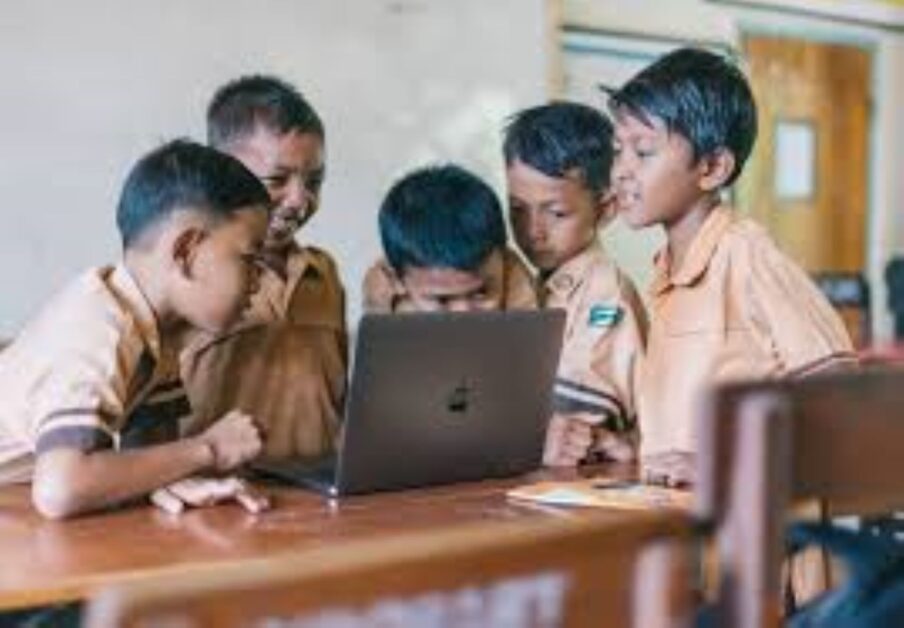The report, School Education Sector Initiatives 2020-21, shows that the digital divide has disproportionately affected some states, while some may have done well due to the adequate availability of smartphones and televisions.

Between 40% and 70% of children in school in seven large states (Assam, Andhra Pradesh, Bihar, Gujarat, Jharkhand, Madhya Pradesh and Uttarakhand) do not have access to digital devices, according to a report prepared by the Union Ministry of Education document the response to the challenges posed by the Covid-19 pandemic.
- The report, School Education Sector Initiatives in 2020-21, shows that the digital divide has disproportionately affected some states, while some may have done well due to the adequate availability of smartphones and televisions. However, the picture remains incomplete in the absence of data from states like Uttar Pradesh and West Bengal, and questionable claims like Rajasthan that there are no students without digital access.
- The report, was prepared based on data shared by 22 of the 28 states and seven of the eight union territories.
- State interventions to close the gap also reflect the same disparity: some like Tamil Nadu claim to have distributed 5.15 lakhs of laptops to students, compared to 42 Bihar government cellphones.
- In absolute numbers, prepared on the basis of surveys of varying sample sizes by states and UT in 2020 and 2021, it was found that 29 million students, including 14.33 million in Bihar, did not had no access to digital devices.
- The ‘new normal’ can also have a huge impact on the learning levels of almost all children; Learning loss can be a reality for many children, the report says.
- Among the states that responded, those with a very high proportion of students without digital access include Madhya Pradesh (70%), Bihar (58.09%), Andhra Pradesh (57%), Assam ( 44.24%), Jharkhand (43.42%)), Uttarakhand (41.17%) and Gujarat (40%). Among the best-located states and UTs are Delhi with around 4% of students without access, Kerala 1.63%, Tamil Nadu 14.51%.
An overview of some of the report’s findings:
- Assam: The state reported 3,106,255 students without a digital device. According to data from the Unified District Education Information System, it has 7,01,5898 students in 65,907 schools. Although the state has not distributed devices, it has organized home visits for teachers and launched a free helpline for students to resolve academic issues and address psychosocial issues.
- Andhra Pradesh: The state surveyed 29.34 lakhs out of 81.36 lakhs of students in May 2021 and found that 2,015,568 students did not have access to cell phones. Parents at 10.22 lakh have phones that can only make calls, and students at 4.57 lakh have access to phones without mobile data. Report found that 3.88 lakh students do not have access to television. Only 5,752 students have laptops. So far, the state has distributed 2,850 laptops and 18,270 tabs, and is planning a toll-free number.
- Bihar: The state, which has 2.46 million students, said 1.43 million children do not have access to digital devices. In terms of interventions to close the gap, it has delivered cell phones to 42 students and plans to deliver tablets to 250 schools. With the help of UNICEF, mobile vans equipped with televisions, videos, math games and toys were deployed in seven districts, with special attention to Mahadalit / Mushahar communities.
- Gujarat: A UNICEF survey of 12,000 schools found that 40% of students did not have access to smartphones and the Internet. The state has Rs 1.14 crore of students in 54,629 schools. To close the gap, the state government distributed blended learning modules and launched an IVRS helpline. About 11,200 devices were provided to students and 40,000 to teachers.
- Jharkhand: Out of 74.89 lakh of students, 32.52 lakh do not have digital access. The state informed the Center that tablets were provided to schools and group resource centers in 2018-19. With the number of Android phones in remote tribal-dominated villages ‘very low’, the state has partnered with UNICEF to develop home learning modules and launched mohalla schools in remote areas .
- Madhya Pradesh: A 98 lakh education department survey of the state’s 1.57 crore students found that 70% of them do not have access to smartphones. The April 2021 survey indicated that 53 lakhs have access to televisions and 57 lakhs have access to radios. Listed interventions include mohalla classes and regular teacher-parent interactions over the phone. A school radio show was also launched immediately after the national shutdown.
- Uttarakhand: State authorities surveyed 5.20 lakh out of 23.39 lakh of school-age children and found that 2.14 lakh did not have access to digital devices for online learning. It proposes to distribute more than 35,000 electronic books to school students. The state also tried to sensitize the community to stay in touch with these students, distributed worksheets to them, and also used community radio in five districts.
The Ministry of Education report highlights once again the sad reality of differential access to education, made all the more surprising by the disruption induced by the pandemic and the resulting digital divide. Official figures also validate the concerns expressed by associations working in the education sector. The report also highlights interventions at different levels to close the gap, but the need to intensify efforts cannot be overstated.


More Stories
UGC Approves 101 Universities to Offer ODL and Online Programmes for 2025–26: Complete List, Admission Deadline, and Key Guidelines
BPSC AEDO Recruitment 2025: Record 9.7 Lakh Applications for 935 Vacancies
ICAI CA January 2026 Exam Dates, Registration, Fees, and Timings – Complete Guide